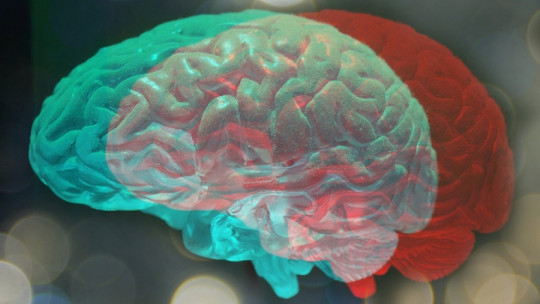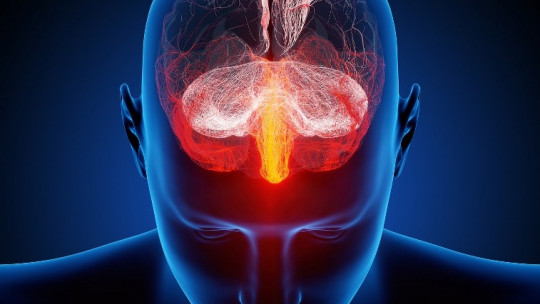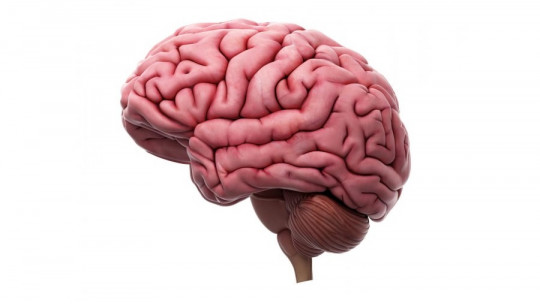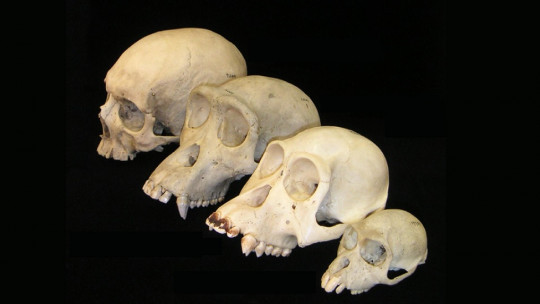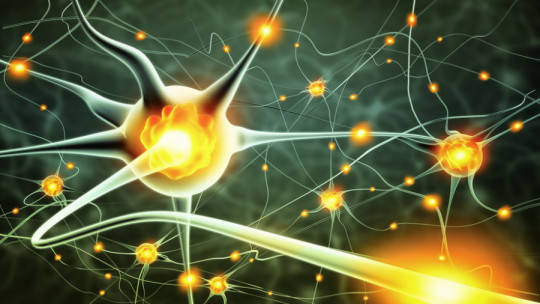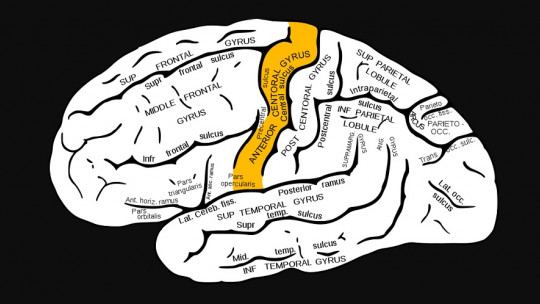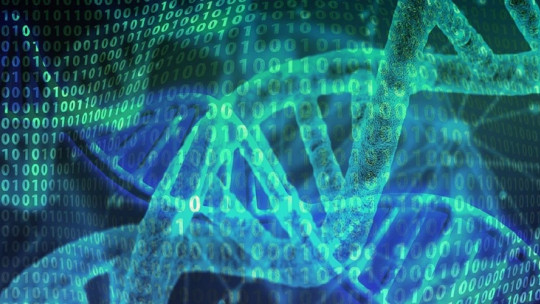
Human Accelerated Regions (HARs) are a set of segments of the human genome which, despite being shared with other vertebrates, are observed in a remarkably different way in our species.
What differentiates us from a chimpanzee? Behaviors, cognitive expressions and the ability to generate languages and civilizations are a reflection of the neurological development of the human being at two different levels: one genetic and the other cultural. Thus, to unravel the secrets of these characteristics that make us so different from other animal species, it is necessary to turn to our evolutionary history and genetic mapping.
Human accelerated regions or HARs try to answer this impressive question, since the variation in loci (fixed positions of a chromosome) between similar species, such as humans and chimpanzees, could be in part the answer to the evolutionary driver. that has led us to a “dominant” position as a species on Earth.
Human accelerated regions: the key to behavior
Comparative genomics is responsible for studying the similarities and differences between the set of genes in the chromosomes of the planet’s organisms
This scientific discipline tries to discover what characteristics have been established by natural selection over time, in order to understand the different evolutionary pressures to which living beings have been subjected throughout their generations.
To understand these underlying mechanisms that push living beings to vary over time it is necessary to clarify that there is a phenomenon of “genetic purification” in the natural world.
What happens when we deviate from natural selection?
It is necessary to note that negative selection is an evolutionary mechanism by which deleterious alleles (each of the two or more versions of a gene) for a species are eliminated over time, “purifying” the genetic pool of the population. .
For example, an animal that presents a mutation that is not beneficial for the community in which it lives will have fewer descendants or will die more quickly (population genetic mechanisms), which will eliminate that harmful allele over generations. If a bird is born without an eye due to a mutation, you would expect it to reproduce less or be hunted faster than the rest, right?
But… what about human beings? that we have gotten rid of this mechanism of negative selection, because in a world from a Western point of view, the survival rate of the individual is not influenced by its mutational impediments, as long as medicine allows it (autoimmune diseases or lack of some limb, for example). This, among many other factors resulting from a purely anthropic society, could lead to three mechanisms:
We are moving through complicated terrain that includes very complex genetic terminologies, but one idea must be clear: human accelerated regions suffer relatively rapid mutation rates compared to the rest of the genome, and due to a lack of selective pressure and adaptive responses, these areas are highly divergent compared to other hominids.
Codifying and conclusive, or not?
In this point, It is essential to emphasize that 99% of human DNA is non-coding that is, it does not present information for protein production, and therefore does not act directly on the individual’s metabolism.
Although it was initially thought that these DNA segments were “junk”, it is becoming increasingly clear that they play essential roles in regulating the activation of essential genes in various ways, as it has been shown that certain regions can promote the activation or repression of the transcription of certain proteins.
This is one of the big problems with human accelerated regions, since 92% of them are found in non-coding regions. Therefore, most of these genetic elements are in uncharacterized areas of the genome and their evolutionary conservation does not have to predict a specific differential function in humans.
Even so, This does not mean that these highly mutated areas do not respond to human characteristics Many of them are present in “intergenic” regions, that is, regulatory sequences that could modulate the expression or suppression of certain coding genes. Of course, these ideas must be studied in more depth to reach reliable conclusions.
A practical example
To understand this entire mutagenic and evolutionary conglomerate, it is best that we turn to an example We have before us the HAR1 region, a DNA sequence composed of 118 nucleotides; commonly called bases, because of the nitrogenous base that each of them contains, adenine, cytosine, thymine and guanine. Let’s look at some revealing realities about this segment:
This data has to mean something, right? Otherwise, what sense does it make that there is greater variation between two lineages that have differentiated relatively recently? This fact makes us suspect that this rapid rate of mutation may be correlated with some characteristics that make us define ourselves as “human.”
To make things more interesting, other studies have shown that the five fastest-mutating human accelerated regions have 26 times more substitutions (mutations) than the analogous ones in chimpanzees
But are there differences between HARs in human evolutionary history? According to other sources, the differences in these regions between archaic hominins (Neanderthals) and modern humans is around 8%, which exemplifies that this evolutionary divergence that characterizes us must have accelerated about 500,000 years ago, and could have been decisive for the characterization of the genus Homo. Of course, variations in the human genome throughout our evolutionary history may hold much of the answer to our characteristics as a species.
HARs and mental disorders
Even more surprising, if possible, is knowing that studies have observed that certain mutated genes are found in the vicinity of these accelerated regions in patients with mental disorders such as schizophrenia, and therefore it is postulated that they could be influenced by them.
Beyond this, other research has documented that various genetic variations in patients with autism are found in accelerated regions. This could translate into a specific modulation in the production of proteins that interact with the brain, which would condition “normal” functioning in the individual’s behavior.
Conclusions
As we have seen, human accelerated regions They are segments of DNA that could play an essential role in the development of human beings that is, those special characteristics that define us as a species.
Furthermore, studies have revealed that they could modulate the expression of certain genes, which would condition the individual’s metabolism and therefore their behavior, especially in disorders such as schizophrenia or autism.
As much as the research has laid promising foundations, it is essential to emphasize that at no time have we stopped moving within theoretical and experimental frameworks. Nothing stated here should be interpreted as dogma or absolute reality, since an extensive period of research is still required to understand the uniqueness of these genetic segments.

